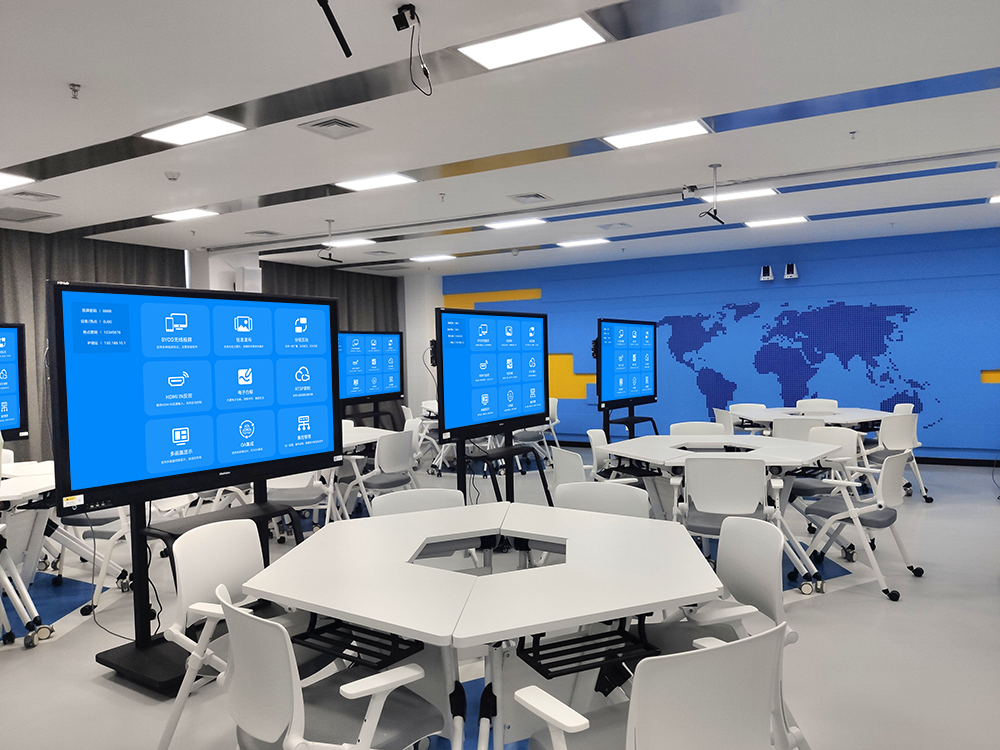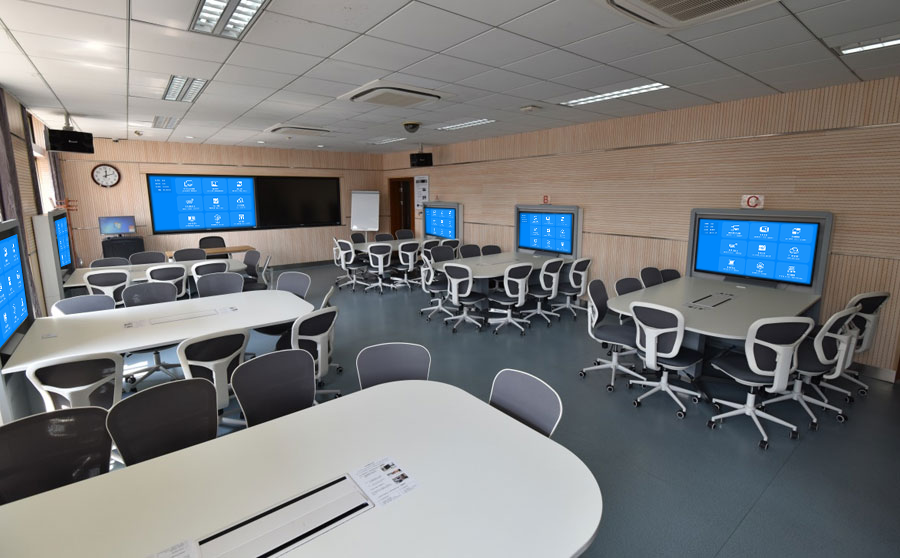Multi-Screen Interaction: A Cross-Device Collaboration Solution
The key to multi-screen interaction is breaking down the barriers between screens, allowing devices like phones, computers, tablets, and large displays to shift from “working alone” to “working together.” A practical solution enables a natural flow of multi-screen collaboration in office, educational, and home scenarios through flexible connections, smooth content flow, and a variety of interactive features.
I. Multi-Screen Interconnection: Simple Device Recognition
Universal Terminal Connection: Whether it’s an Android or Apple phone or tablet, a Windows or macOS computer, or even an old projector or a smart TV, all can connect to the same interactive network. You don’t need to worry about the brand or model. You can connect by scanning a QR code, tapping your device using NFC, or using the built-in system function. Pairing is completed in 3 seconds, with a compatibility rate of over 99%, so even older devices can keep up.
No Complex Setup: You don’t have to manually change network settings or install drivers. A device will automatically “recognize” and show a connection prompt when it’s nearby. If you need to add a temporary device, like a visitor’s computer, they can join by scanning a QR code without having to configure permissions beforehand. You can connect and use it on the fly.
II. Content Flow: Seamless “Two-Way” Transfer Between Screens
Two-Way Content Migration: A document on a computer can be “pushed” to a large screen with a single tap, and annotations on the large screen can be “pulled” back to a phone. After a photo is mirrored from a phone to a TV, if you zoom in on a detail on the TV, the phone will follow along and zoom in too. The quality and format remain the same during content flow, so tables and images in a document are clear, and there are no issues with the file getting corrupted when you mirror it.
Multi-Screen Split-Screen Linkage: A large screen can display content from multiple devices simultaneously. For example, the left side can show a proposal framework from a computer, the right can show on-site photos from a phone, and the bottom can show revision notes from a tablet. The split screens don’t interfere with each other, making comparison and viewing more intuitive. You can also switch between single-screen and split-screen modes with a single tap to adjust the display method to fit your needs.
III. Interactive Features: Smooth “Cross-Screen” Operation
Cross-Screen Control: You can tap a document mirrored from a phone on a large screen and directly annotate it with a stylus. The annotations are sent back to the phone in real time. You can use a tablet to remotely turn pages on a PPT mirrored from a computer, which allows you to stand and lecture freely without having to be near the computer. The control latency is kept to under 20ms, so it feels like you’re operating a single device.
Real-Time Synchronized Interaction: When multiple people are interacting, a person can edit a proposal on their tablet, and another person on their computer will see the edits synchronously. In a classroom, when students submit answers from their phones, a statistical analysis of the answers appears on the teacher’s large screen in real time. The teacher can then mirror a specific student’s answer page to the large screen to explain it on the spot, which significantly increases interaction efficiency.
IV. Scenario Adaptation: “Connecting” to All Needs
Office Scenarios: In a meeting, attendees can all connect their devices to a large screen. With multi-screen split-screen, different proposals can be compared side-by-side. If someone has an idea, they can annotate it on their own device and mirror it to the large screen without having to fight for a single computer. When a remote colleague joins the meeting, their screen content can also be mirrored and displayed on the same screen as the local devices, making remote discussions feel like they’re happening in the same room.
Educational Scenarios: A teacher can mirror courseware from their tablet to the large classroom screen and use their phone to remotely control page turns and highlight key points while walking around. Students can mirror their homework from their tablets to a group screen, where their group can help correct it on the large screen. After it’s revised, they can push it to the main screen for the teacher to critique. In a lab class, multiple students’ devices can mirror their operational screens to a large split screen, allowing the teacher to view multiple groups’ actions at the same time and provide timely guidance.
Home Scenarios: Parents can mirror travel photos from their phones to the TV, and a child can mirror a cartoon from their tablet to a small screen next to it, so everyone can watch what they want without interfering with each other. When a child takes an online class, mirroring it to the TV allows a parent to remotely adjust the progress and pause it with their phone, without having to always be right next to the child. You can even use your phone as a remote control to change the mirrored content on the TV from the kitchen.
V. Management and Maintenance: Worry-Free and Reliable
Device Status Visualization: An administrator can use the backend to see the connection status of all devices, which ones are interacting, and how many windows are being used on the large screen at a glance. If a device goes offline or lags, an alert is automatically sent, and they can restart and debug it remotely without having to go on-site.
Controllable Permissions for Security: You can set permissions by scenario. In an office setting, only authorized devices are allowed to interact, which prevents unauthorized mirroring. In an educational setting, only the teacher’s device is allowed to control the split-screen during class time, which maintains order. All interactive actions are logged, which provides peace of mind.
This multi-screen interaction solution prevents screens from being information silos. It enables content to flow and operations to be cross-screen. Whether for office, educational, or home use, it makes multi-device collaboration more convenient and truly achieves a “one-screen linkage, multi-screen win-win” situation.